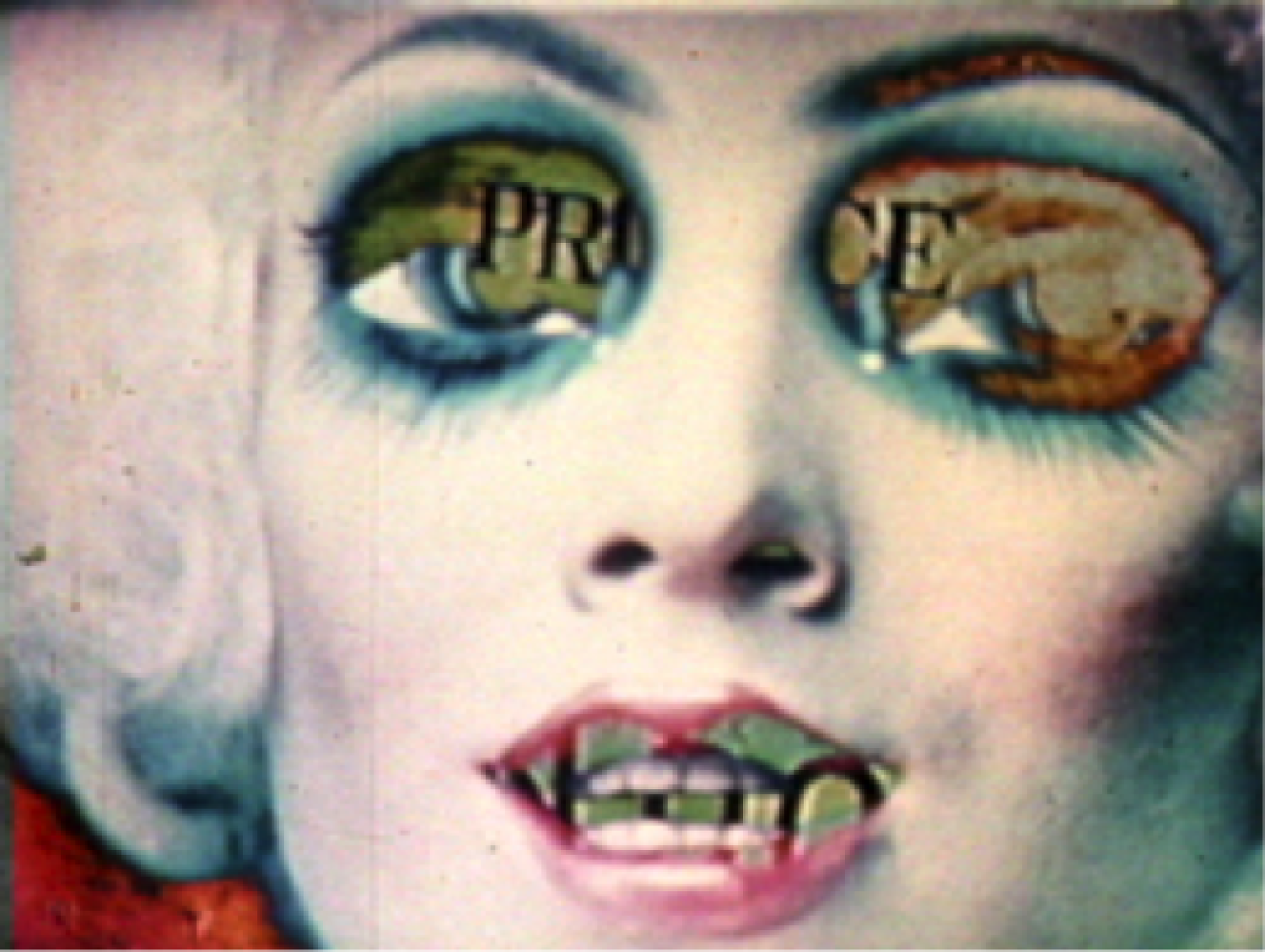Glenn Phillips #braks2013

Disturbances and Distortions
Program by Glenn Phillips
Distortion, feedback, noise: some of the most powerful works of early video art are the result of astonishingly muscular manipulations of thevideo signal. Yet there is more to these lush and trippy abstractions than first meets the eye. This program samples artists’ approaches to analog processing and other forms of video manipulation in the 1960s and 70s, looking at the surprising array of techniques by which artists encoded conceptual, political, emotional, or narrative content into their works.
Wolf Vostell, Sun in Your Head, 1963, black-and-white, silent, 7:10
“Single Frame sequences of TV or film images, with periodic distortions of the image. The images are airplanes, women men interspersed with pictures of texts like: ‘silence, genius at work’ and ‘ich liebe dich.’ The end credit is ‘Television décollage, Cologne, 1963.”
Kohei Ando, Oh! My Mother!, 1969, color, sound, 14:00
Oh! My Mother was made using the feedback effect, which is produced by infinitely expanding the image by looping the video.”
Nam June Paik, Early Color TV Manipulations, 1965-68, color, silent, 5:18
Marked by a playful, irreverent sense of improvisation and experimentation, these experiments with image manipulation and synthesis form a link between Paik’s performance and sculptural works of the 1950s and early 1960s and the celebrated video works and installations of his later years.
Steina and Woody Vasulka, Excerpts from Vasulka Video, 1978, video, black-and-white and color, sound Stan VanDerBeek, Vanishing Point Left, 1977, color, sound, 9:30
In Vanishing Point Left, the “vanishing point” is an analogy for the metaphysics of watching the video screen, which assumes such forms as a mandala, flower or gyre.
Joanne Kyger, Descartes, 1968, single-channel video, black-and-white, sound, 11:25 Wolfgang Stoerchle, Sue Turning, 1973, video, black-and-white, sound, 12:00
Glenn Phillips is Principal Project Specialist and Consulting Curator in the Department of Architecture and Contemporary Art at the GettyResearch Institute in Los Angeles. His exhibition California Video won the International Association of Art Critics award for best exhibition of digital media, video, or film in 2008. His other exhibitions include Time/Space, Gravity and Light; Marking Time; Evidence of Movement; Reckless Behavior; Pioneers of Brazilian Video Art 1973-1983; Surveying the Border: Three Decades of Video Art about the United States and Mexico; and Radical Communication: Japanese Video Art 1968-88.
Prior to working at the Getty he was Assistant Curator for Special Projects at the Whitney Museum of American Art, where he worked on a number of exhibitions, including No Wave Cinema; The American Century: Art & Culture 1900-2000; the 1997, 2000 and 2002 Whitney Biennial exhibitions; Bitstreams: Art in the Digital Age; and Tony Oursler: The Darkest Color Infinitely Amplified. For the Pacific Standard Time initiative he is co-curator of the three-part exhibition It Happened at Pomona: Art at the Edge of Los Angeles 1969-73, and a member of the curatorial team for the exhibition Crosscurrents in L.A. Painting and Sculpture 1950-1970 at the J. Paul Getty Museum. He is co-director, with Lauri Firstenberg, of the Pacific Standard Time Performance and Public Art Festival.

